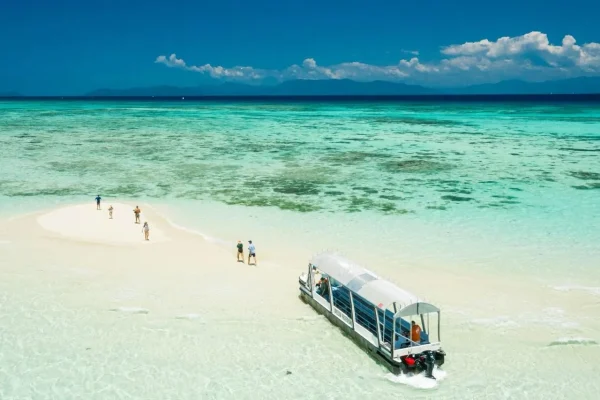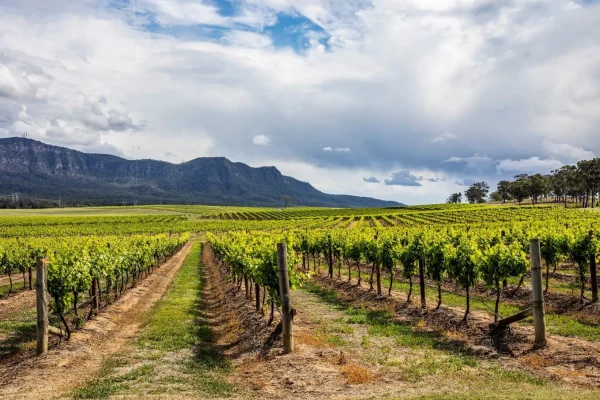See Glow Worms In The Blue Mountains
Whispering our way into the magic of seeing glow worms in the Blue Mountains always takes me back to a first time when I snuck onto a pretty soggy track near Wolgan Valley with essentially nothing but a red light torch and a half-frozen thermos in my daypack, I mean, it was a pretty grim setup. You don’t stumble into these amazing glow worm colonies by chance; it takes some work to get to them – quiet footstep by quiet footstep. Stick with me and I’ll sketch out the best bits, the safest ways to get there & the sensible advice you’ll need for a night walk through this incredible UNESCO-listed wilderness.
Tracking Down The Night Glow While Keeping It Wild
You don’t need all the high-tech gear or night vision goggles to track down glow worms – a little patience, a pitch black night and a warm jacket are about it. The trick is to slow down enough to let your eyes get used to the dark, & the bush to calm down around you. When you do that, those tiny soft lights just pop up like someone’s strung up fairy lights along the canyon walls.
Glow worms aren’t worms at all, they’re actually the larval stage of a fungus gnat – but who needs to know all that to appreciate them? You just need to know how to look without scaring them off and where the best bits are hiding out across the Mountains.
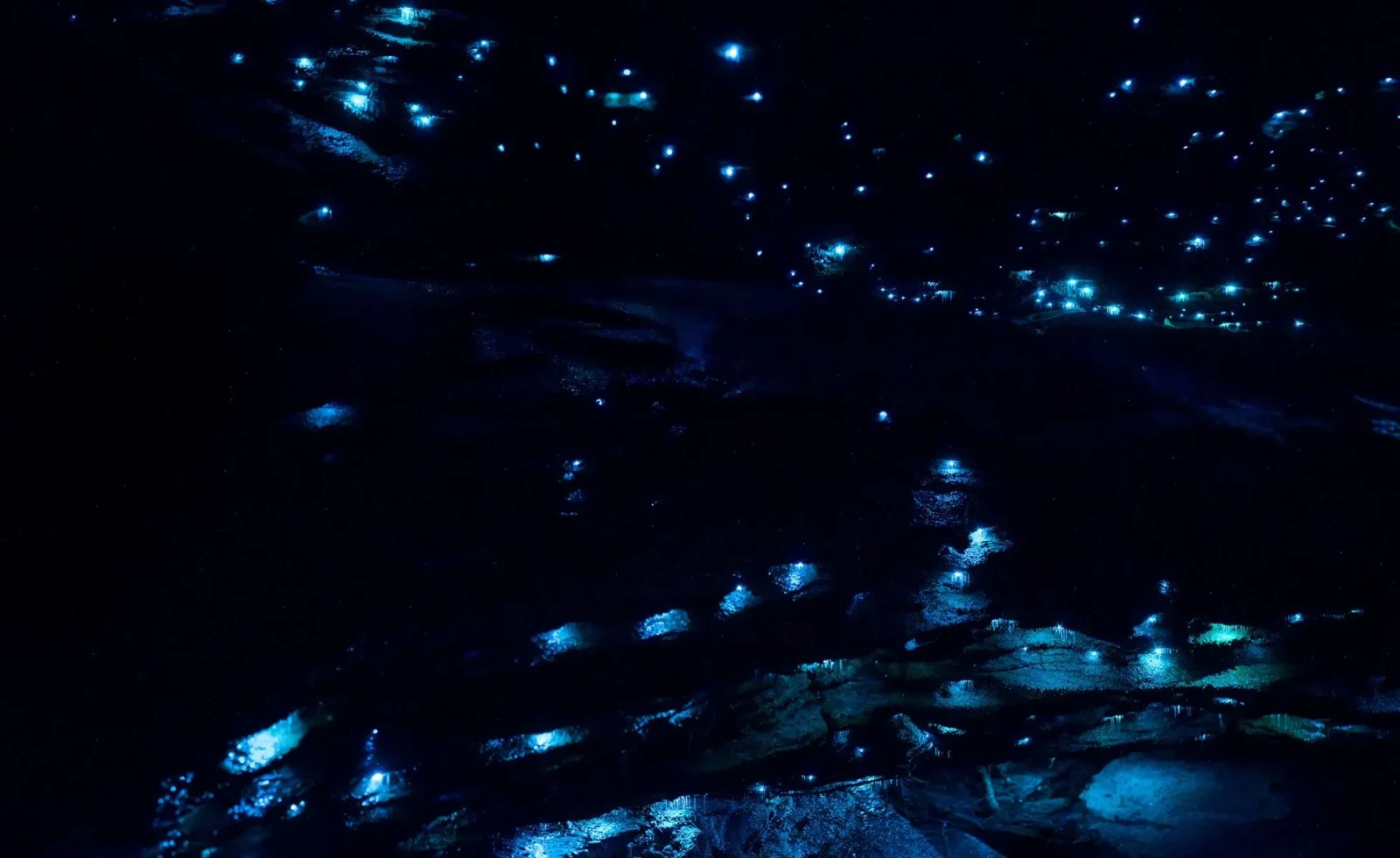
Why These Tiny Creatures Spark The Night Alive
Glow worms light up for one reason & one reason only: to catch themselves some dinner. They’ve got this glow to lure in small insects, which they get stuck in sticky threads they spin out like fishing lines. It’s all about survival, not about putting on a show – and although it’s not exactly the most elegant thing to do, it’s bloody stunning all the same. They shine brightest when the air’s thick with moisture, it’s really quiet, and there’s a bit of damp in the air. That’s why they’re at their most dazzling after a bit of rain or in the still darkness of a canyon where the air’s just right.
Quick Facts About These Night-Time Shiners
Here’s a fast-hit table to get you bush-ready:
| Fact | Details |
|---|---|
| Species | Arachnocampa richardsae (Blue Mountains) |
| Best Viewing | After rain, cool nights, low moonlight |
| Peak Glow | 20–30 mins after full darkness |
| Glow Strength Factors | Humidity, darkness, absence of noise & light |
| Safety Consideration | No touching, no loud voices, no bright torches |
| Average Larval Stage | 6–12 months |
| Heat Sensitivity | High — avoid visiting in hot, dry periods |
These are pulled straight from wildlife studies across NSW, including conservation notes from the Blue Mountains region.
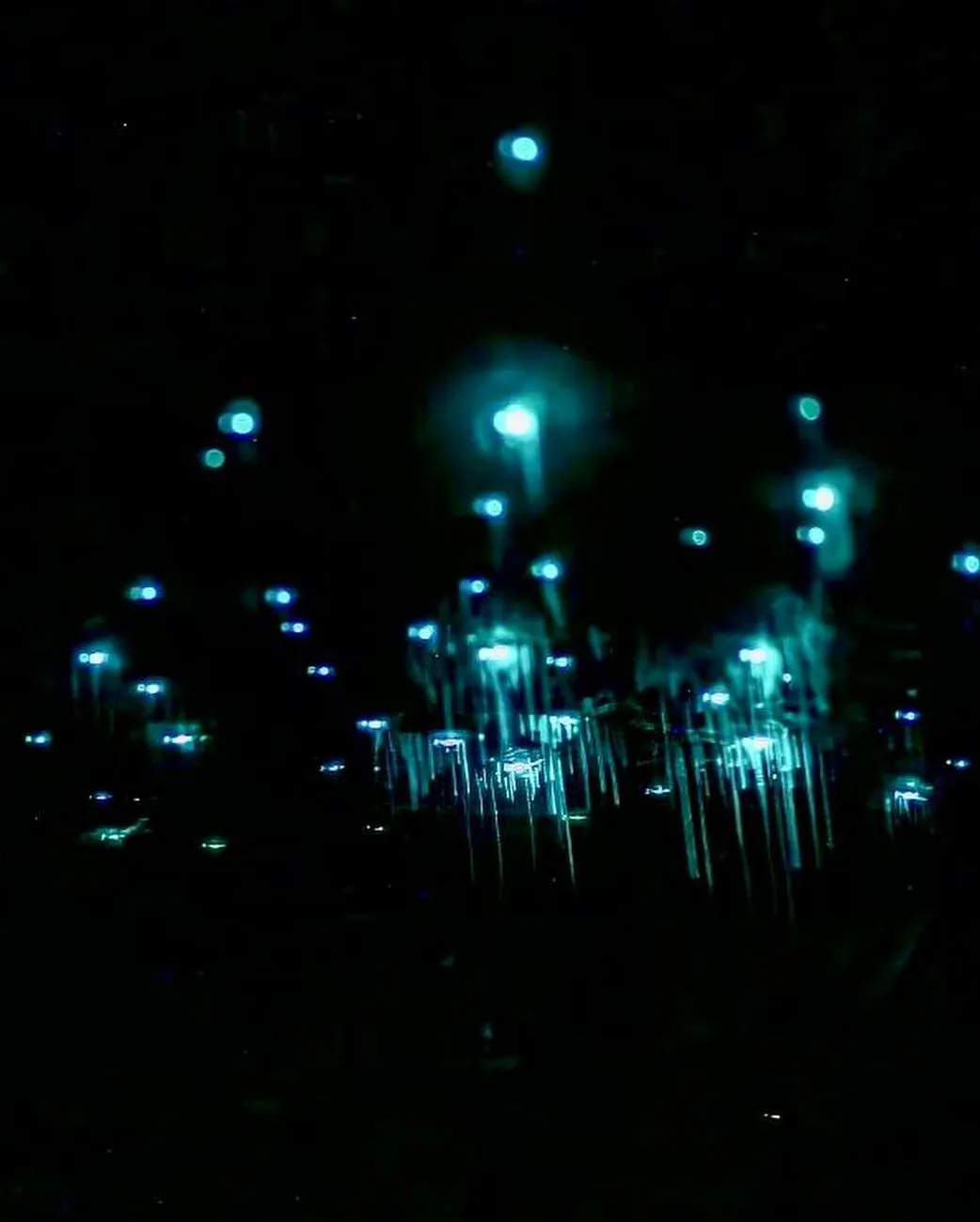
Where the Bush Lights Up
You don’t actually need a 4WD or be an expert bushwalker to track down the glow worms. A good pair of shoes, a torch that can dim and a healthy dose of respect for the little buggers that make this magic happen is all you need. The spots we’ve listed below consistently deliver if you time your visit right and remember to keep your lights low.
The Iconic Tunnel Deep in Wollemi National Park
The Glow Worm Tunnel in Wollemi National Park is the standout. Originally part of an old railway line that once supported the oil shale mining industry, this 400m railway tunnel has been taken back over by the glow worms. Walk in a bit too far, and the sandstone walls get lost behind a mass of twinkling, blue-white lights.
What to Expect:
- A well-marked walking track that will guide you to the Glow Worm Tunnel
- Some pretty cool pagoda rock formations as you make your approach from Glow Worm Tunnel Road
- Then, suddenly, you’re in total darkness – a pretty surreal experience
Getting There:
You’ll be able to reach the Glow Worm Tunnel car park with a standard 2WD – I’ve even taken a Toyota Hiace up there a few times. The road can get pretty muddy after rain, but a Toyota Land Cruiser will definitely make things a bit easier, though it’s not essential
A Tip from the Field:
Just block your torch with your hand as you step inside – suddenly shining a light all over the place will shut down the larvae for several minutes.
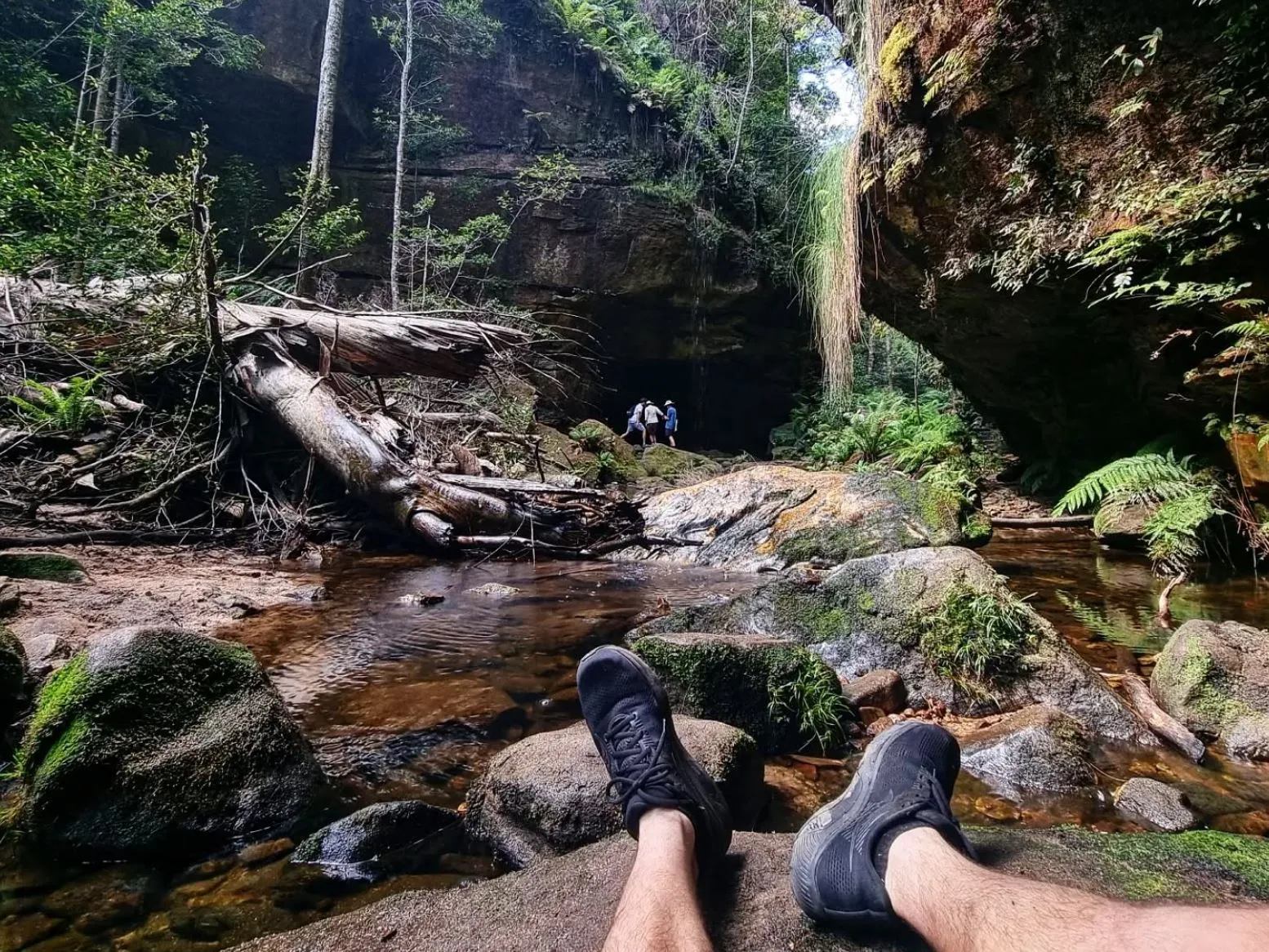
The Grand Canyon Track, Blackheath
This sandstone slot canyon is one of the most beautiful walks in the mountains, no matter the time of day, but at night, it’s something else. As the darkness falls, moisture starts to seep from the walls, and the glow worms set up shop in every overhang.
Why This Spot is So Good:
- Its naturally deep darkness is the perfect backdrop for the glow worms
- The fern clearings and dripping ledges are like little glowworm nurseries
- You can expect to see a good, reliable glow, even outside of peak season
- Bring some trekking poles if you’ve got any knee issues on the steep steps – trust me, after years of guiding all over Europe, my joints have a few choice words to say on the matter
Grand Canyon Track
Horseshoe Falls, Hazelbrook
If you want to see glow worms without committing to a long night hike, then Horseshoe Falls is a good place to start. The short track takes you through some damp gully country and ends up at a rock overhang that’s full of glow worms.
Some other nearby spots to check out include:
- Hazel Falls
- Cataract Falls
- Waterfall Reserve
These are all great for families and first timers
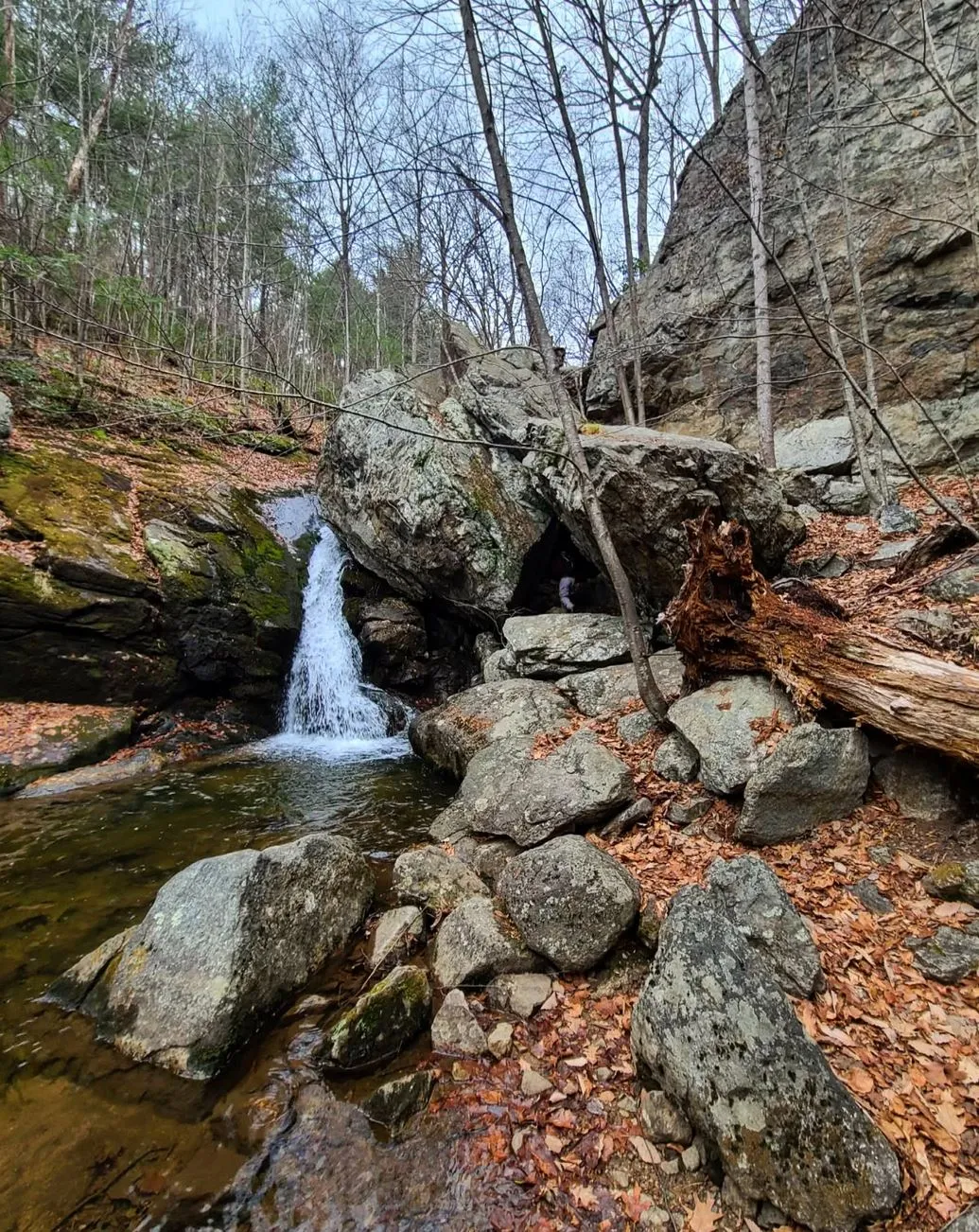
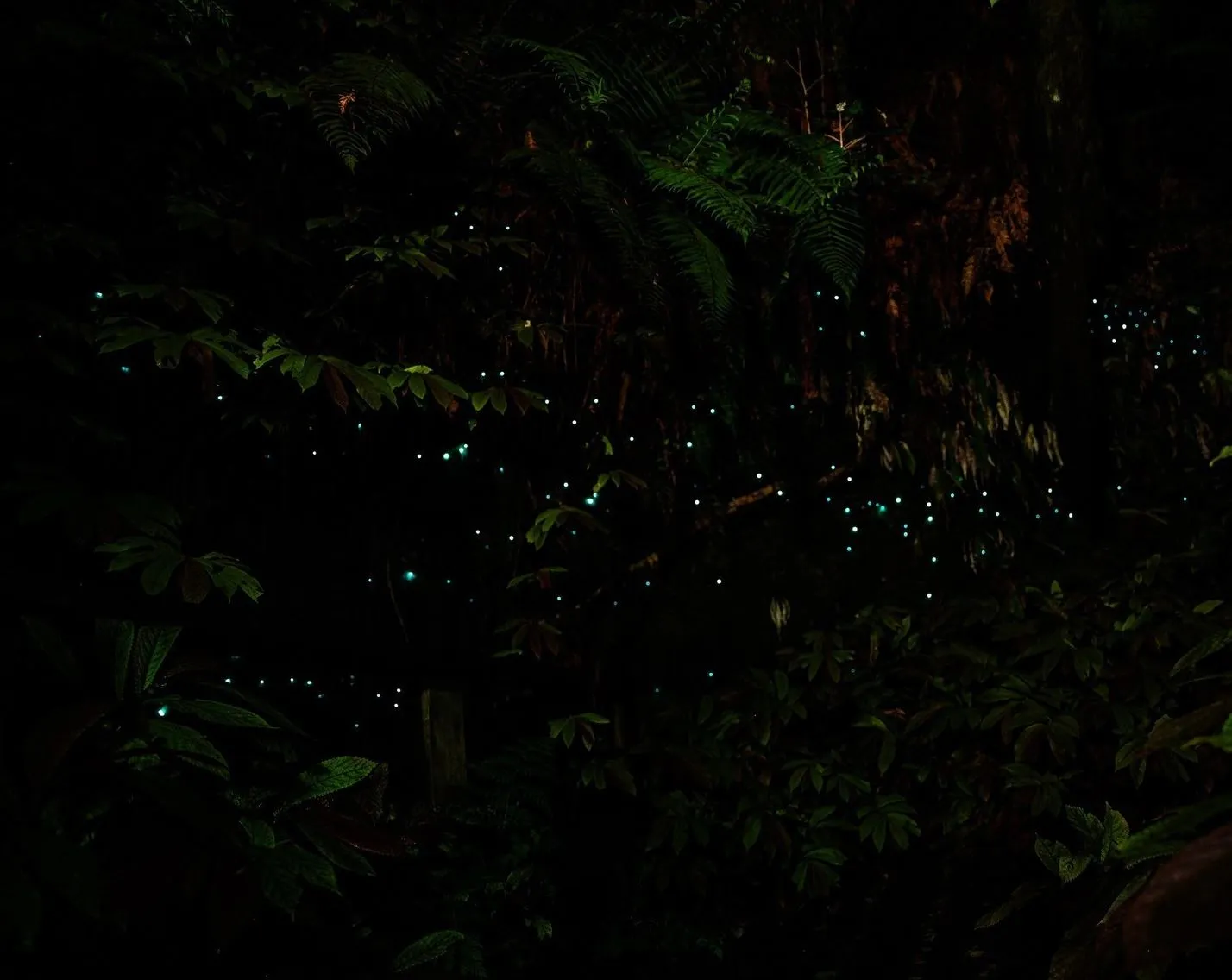
Wentworth Falls Night Trails
You probably already know all about Wentworth Falls in the daytime – who can resist the big scenery shot? – but if you know where to look and have a reliable torch, the night trails have some lovely little pockets of glow worms tucked away in the damp cliff edges.
What Makes It Special:
- The gorgeous sandstone walls
- The overhangs that trap light-sensitive larvae and create an ideal glow worm habitat
- Easier access than the tough National Pass
Just make sure to check if the track is still open – Wentworth Falls is a bit prone to landslips and maintenance works.
Timing Your Visit Right for Maximum Glow
Glowworms aren’t finicky, but they are super sensitive to the conditions. Hit it just right and you’ve got a bushland galaxy lighting up around you. But get it wrong and you can be pretty sure they’ve decided to take the night off.
The Ideal Conditions Are:
- A cool, damp night – the kind that makes you want to grab a sweatshirt.
- No moon, or at the very least a moon that’s still pretty low in the sky.
- Light rain earlier in the day always helps create the perfect conditions.
- And if it’s possible, try to avoid wind and temperature spikes – they’re pretty bad news for glowworms.
Suppose you can, try to plan your visit for the middle of the week. Less chance of noise, fewer torches blazing around, and you’ll be in for a treat.
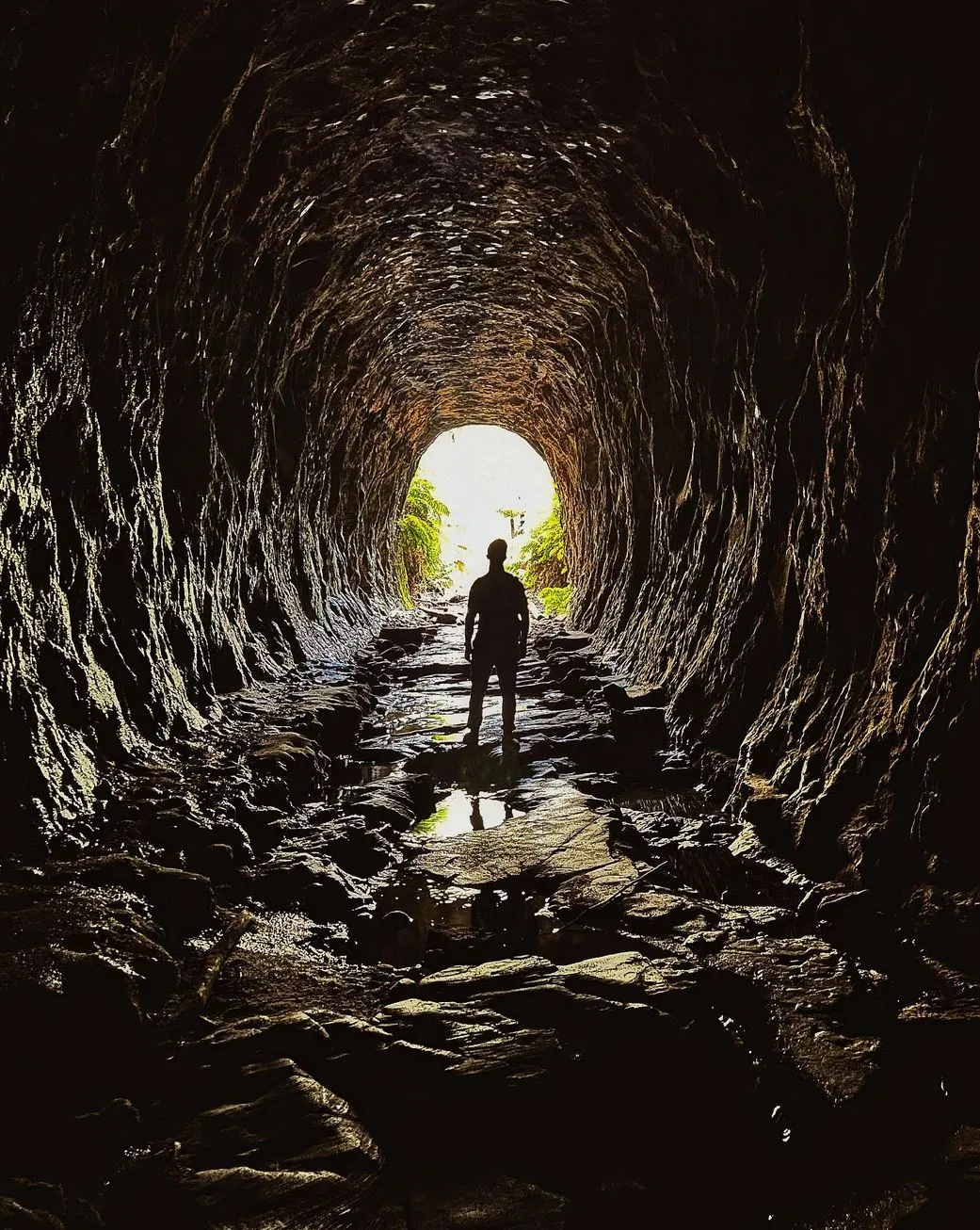
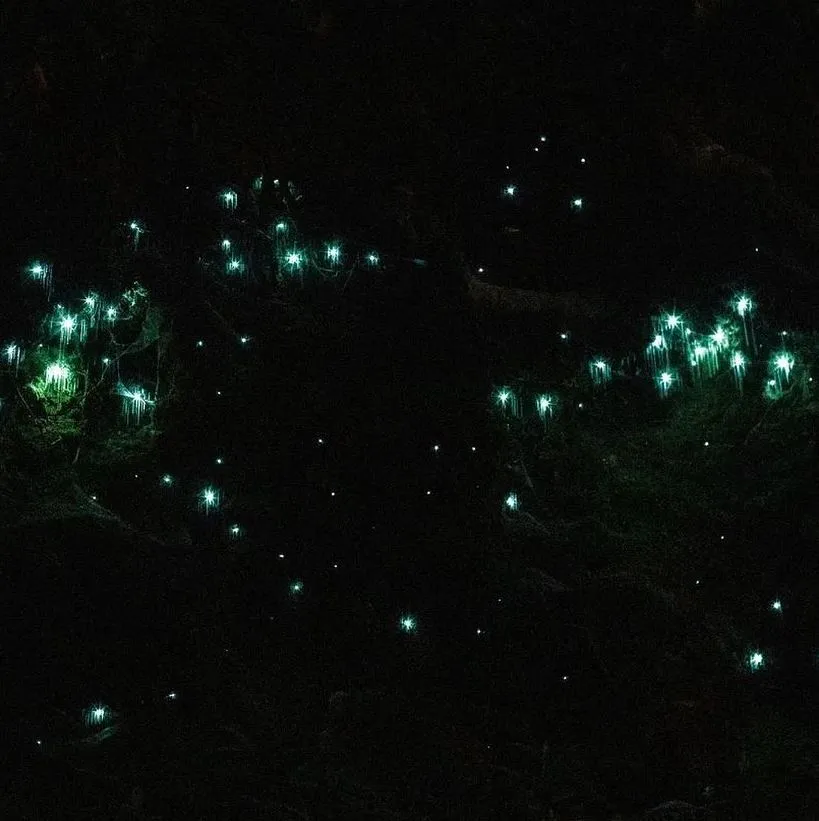
Summer Heat - A Warning:
Summer heatwaves can wipe out huge chunks of the colonies. If it’s climbing into the 30s, it’s best to reschedule and come back another time. The Blue Mountains can get pretty rough in the heat, and the glowworms suffer for it.
If you’d rather leave the navigating to someone else, Blue Mountains Tours is a great option. They run small group nighttime experiences that are super respectful of the environment and slow-paced. They’re a good choice if you prefer to stick with local knowledge and let the experts handle the navigation.
Staying Safe At Night
A night hike through the mountains isn’t complicated, but the bush doesn’t take kindly to complacency.
Pack These Essentials:
- A red light torch – not just any torch, a red light one that won’t disturb the glowworms.
- Spare batteries – you don’t want to be stuck in the dark with a useless torch.
- A warm layer – it gets chilly in the mountains at night.
- Water and soft drinks – you don’t want to get dehydrated on a hike.
- Good shoes with grip – the trails can get pretty slippery.
- And an offline or paper map – just in case your phone goes out of battery.
On The Track:
- Keep quiet – glowworms hate noise, so be as stealthy as a ninja.
- Stay away from cliff edges – it’s a long way down and the view isn’t worth the risk.
- Move slowly over mossy rock – it’s easy to slip and fall.
- And please, don’t touch the walls – you’ll destroy the silk strings that the glowworms use to catch their prey.
Wildlife spotting is part of the fun – you’ll see microbats, possums, gliders and plenty of frogs hanging around the damp gullies.
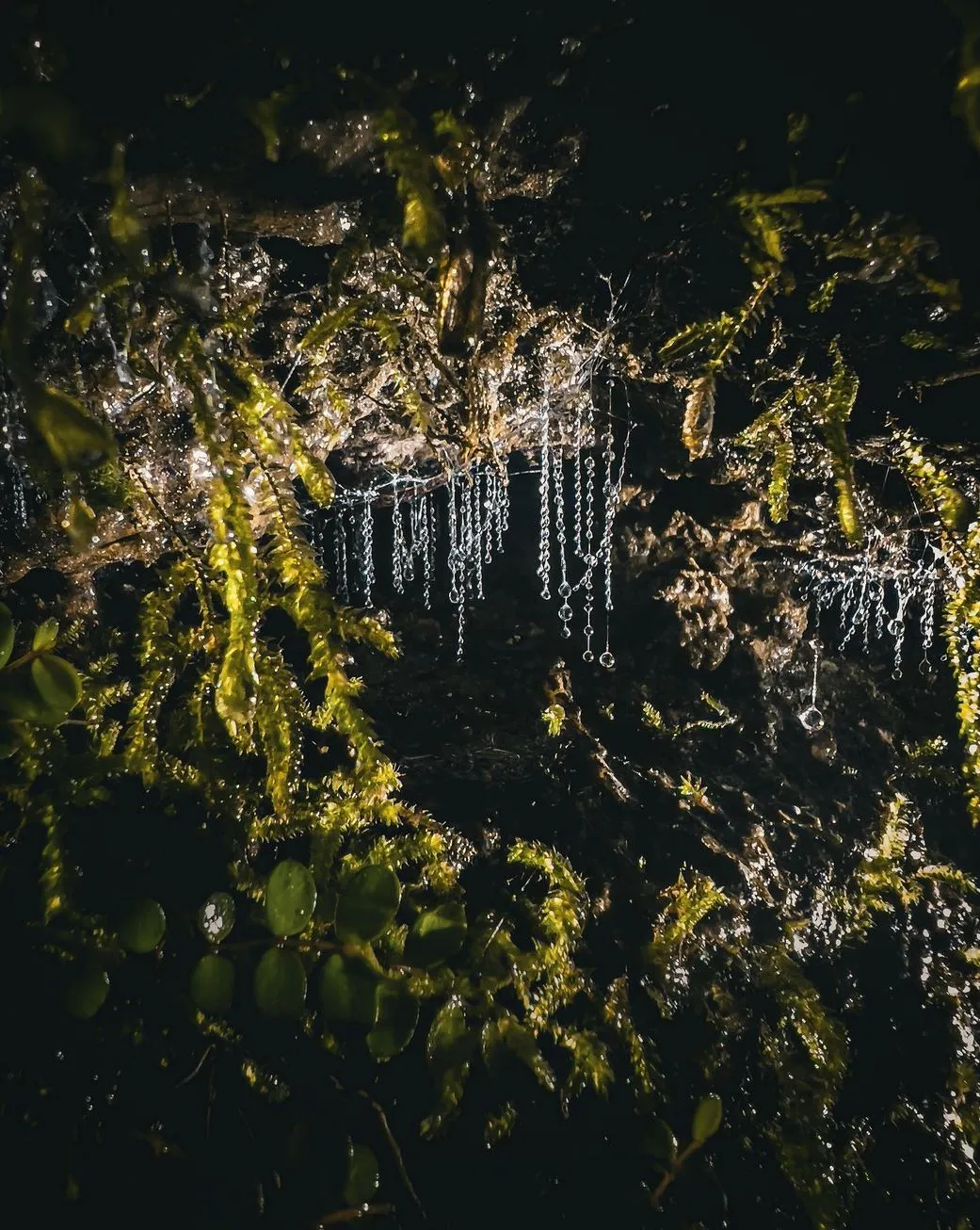

Do No Harm: Helping The Night-Glow Population Thrive
Glowworms are incredibly delicate; a single burst of bright light can ruin their whole feeding rhythm.
Respect The Colonies By:
- Never use white light – it’s way too harsh for the glowworms.
- Never touch the walls – you’ll destroy the silk strings and ruin the colony.
- And please avoid using insect repellent near the colonies – it’s too overwhelming for them.
- And try to keep to the track to protect the fragile habitat – you don’t want to disturb the glowworms unnecessarily.
The goal is simple – leave them glowing for the next person to come along.
A Personal Yarn From One Frosty Night On The Track
One winter night near Blackheath, I led a small, private tour group on a guided night walk through the Grand Canyon. It was the sort of evening where your breath fogs instantly and your fingers go stiff even through gloves. We switched off our torches and let the darkness settle.
The first glow appeared. Then ten. Then the entire canyon wall shimmered like a sky flipped upside down. One traveller whispered, “It feels alive.”
And that’s exactly it — a living, breathing bio-luminescent discovery.
It’s a moment you don’t forget.
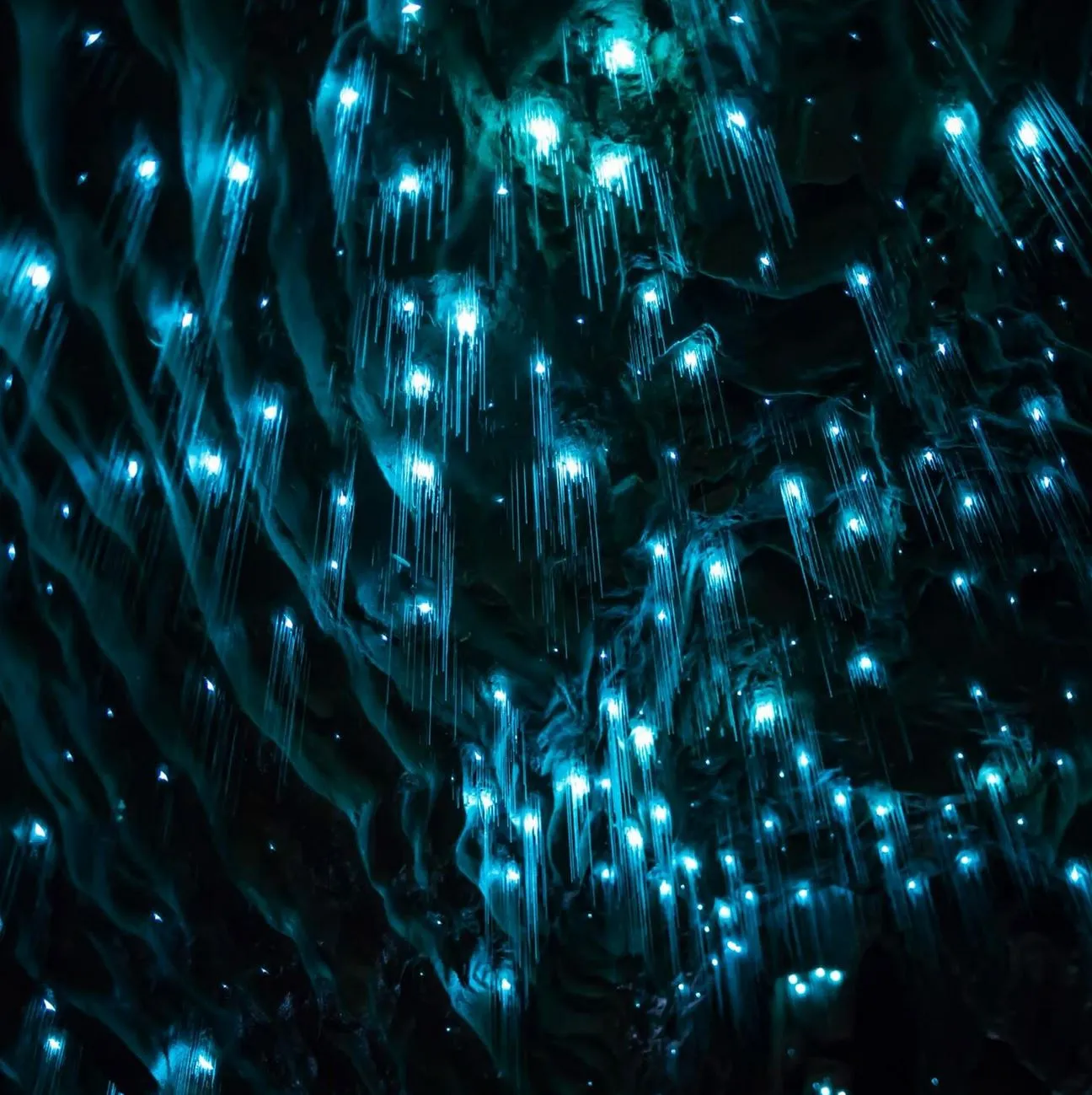
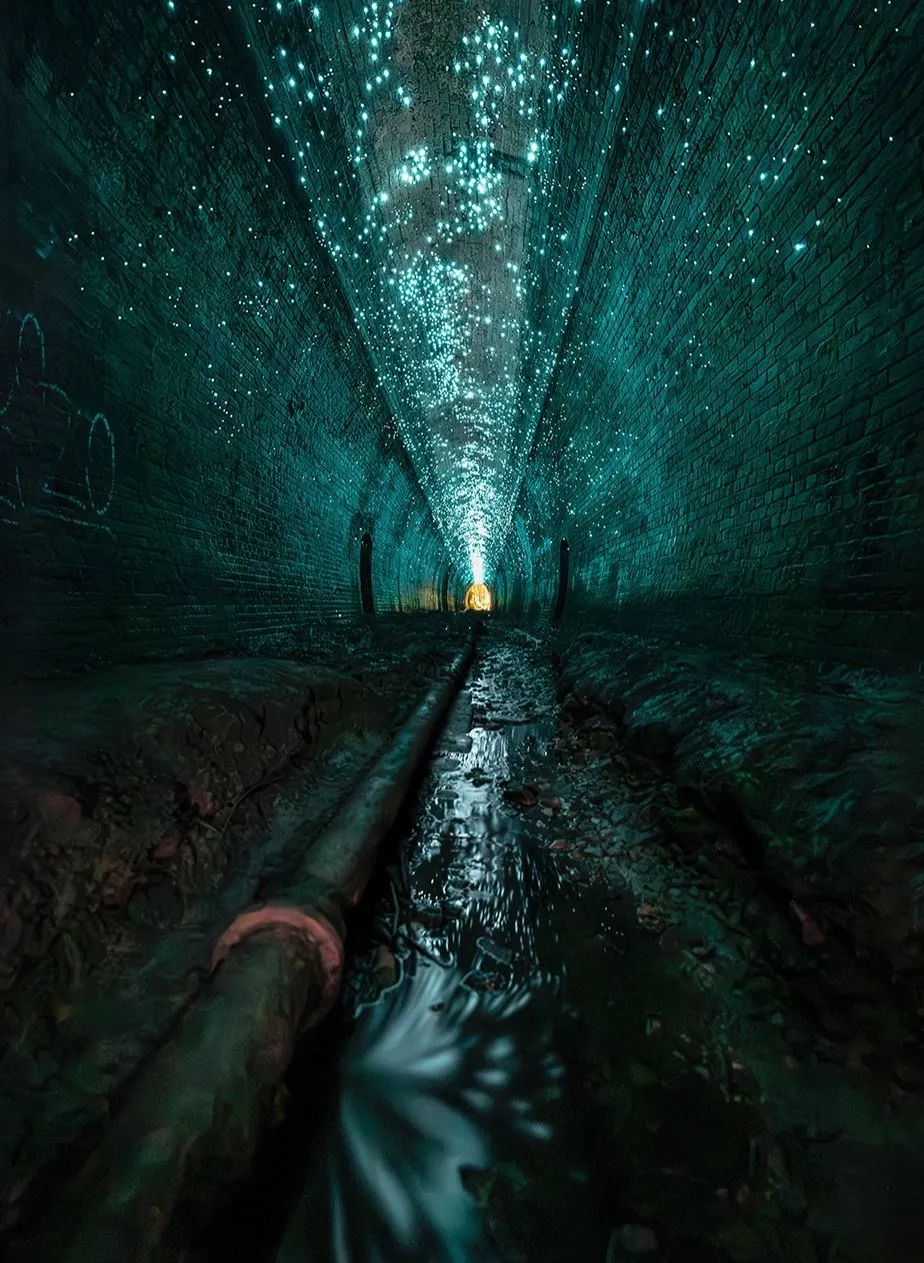
A Night Walk That Lit Up The Canyon Walls
One winter night near Blackheath, I took a small group of people on a personal tour through the Grand Canyon for a night walk. It was the sort of evening where your breath fogs instantly and your fingers go stiff even through gloves. We turned off our torches and let the darkness settle.
The first glow appeared. Then ten. Then the whole canyon wall was shimmering like the sky had been flipped upside down. One of the travellers whispered, “It feels alive.”
And that’s exactly it — a living, breathing bio-luminescent wonder.
You don’t forget that moment.
FAQ
Can I take photos of the glow worms?
Only with prolonged exposure and no white light. Flash or bright LED torches will shut down their glow.
Is the Glow Worm Tunnel safe at night?
Yes — the Glow Worm Tunnel Walking Track is well defined. Just bring a red-light torch and watch your step on wet rock.
Do I need a guide?
Not required, but an experienced tour guide can help you spot multiple colonies, learn about bush tucker and navigate trickier tracks.
What wildlife might I see?
Possums, gliders, microbats, frogs and sometimes wallabies. Night-time wildlife encounters are everyday.
Are dogs allowed?
No, the main glow worm areas are in national parks where dogs are not permitted.


